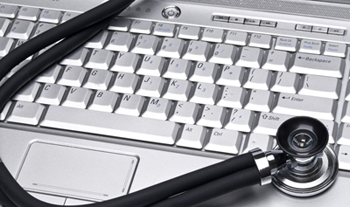This blog is an update for our January 30, 2014 blog post “Crowdsourcing for Medical Transcription“.
 In 2014, we published a report on how crowdsourcing was becoming a popular strategy in the U.S. medical transcription industry. Crowdsourcing allowed healthcare providers to obtain transcribed notes and documents in electronic format in a secure database. This helped them meet Electronic Medical Record (EMR) implementation deadlines and ‘meaningful use’ requirements, though it’s likely that this approach could not replace the quality and security offered by HIPAA-compliant medical transcription services. Today, crowdsourced medicine is a business that is revolutionizing the field of medicine in many ways. Recent reports discuss how crowdsourcing platforms are helping in the diagnosis rare medical conditions sooner.
In 2014, we published a report on how crowdsourcing was becoming a popular strategy in the U.S. medical transcription industry. Crowdsourcing allowed healthcare providers to obtain transcribed notes and documents in electronic format in a secure database. This helped them meet Electronic Medical Record (EMR) implementation deadlines and ‘meaningful use’ requirements, though it’s likely that this approach could not replace the quality and security offered by HIPAA-compliant medical transcription services. Today, crowdsourced medicine is a business that is revolutionizing the field of medicine in many ways. Recent reports discuss how crowdsourcing platforms are helping in the diagnosis rare medical conditions sooner.
Physicians can diagnose most conditions correctly and quickly. However, when a patient has a rare condition or non-specific symptoms, getting an accurate diagnosis can prove a costly process of referrals from specialist to specialist that may take months, and even years.
A study published in 2013 reported that about 8% of Americans are affected by rare diseases, and it takes an average of 7½ years to get a diagnosis. In Britain, diagnosing a rare condition takes an average of 5.5 years, and in most cases, the physician gets it wrong. Another survey conducted in Europe found that, for eight rare diseases, 40% of patients received an incorrect diagnosis initially. When diagnosis is delayed, patients miss out on early treatment and end up spending a lot of money.
Crowd-sourcing platforms have a team of “medical detectives” comprising doctors, nurses, medical students and others who may have no formal healthcare training. This is how crowdsourcing works:

- Patients log on to the site of the crowdsourcing platform
- They answer questions about their symptoms and medical history
- They can also opt to upload their anonymous medical records to the site
The medical detectives will then interact with the patient and each other, leading to a list of potential diagnoses ranked from the most to least probable diagnoses based on crowd opinion. Patients can then discuss the potential diagnosis with their physician.
There are many stories of crowdsourcing that led to accurate diagnosis of a rare condition. San Francisco-based company CrowdMed reports that its team helped diagnose endometriosis in a young woman. She had suffered severe abdominal pain and bleeding due to this uterine disorder for several years as a series of doctors had failed to diagnose the condition. The insights provided by the medical detectives eventually led to an accurate diagnosis of her problem and corrective surgery.
The U.S. National Institutes of Health identifies 7,000 different types of rare diseases. Though crowdsourcing medical diagnoses comes with the limitation of absence of physical examination of a patient, a recent CIMS report says that this approach has expedited the time it takes to find a correct diagnosis, and reduced office visits and medical costs. Patient engagement has taken on a new meaning with crowdsourcing.
As healthcare organizations move to new business models, the capability to capture and track information about patients has become critically important. Even with crowdsourcing, accurate medical documentation is a requirement when patients choose to share their medical records on the site. Medical transcription outsourcing to a reliable medical transcription company can ensure this.
Medical crowdsourcing is not without its critics. NBC News reports that one primary care physician says that the online medical detectives might not be equipped to distinguish whether a symptom is from a physical condition or whether it is a manifestation of a patient’s psychology. Nevertheless, this approach is driving the medical community to consider who it should adapt in an environment of more empowered patients.


